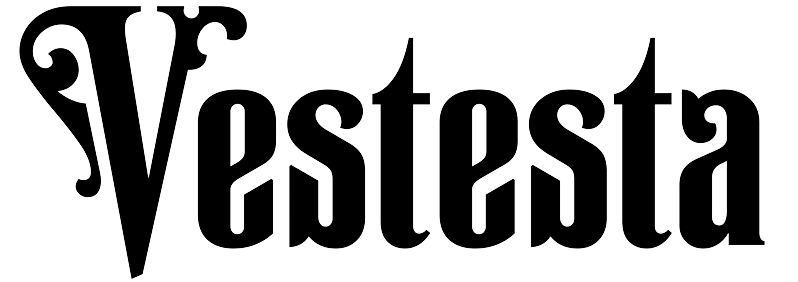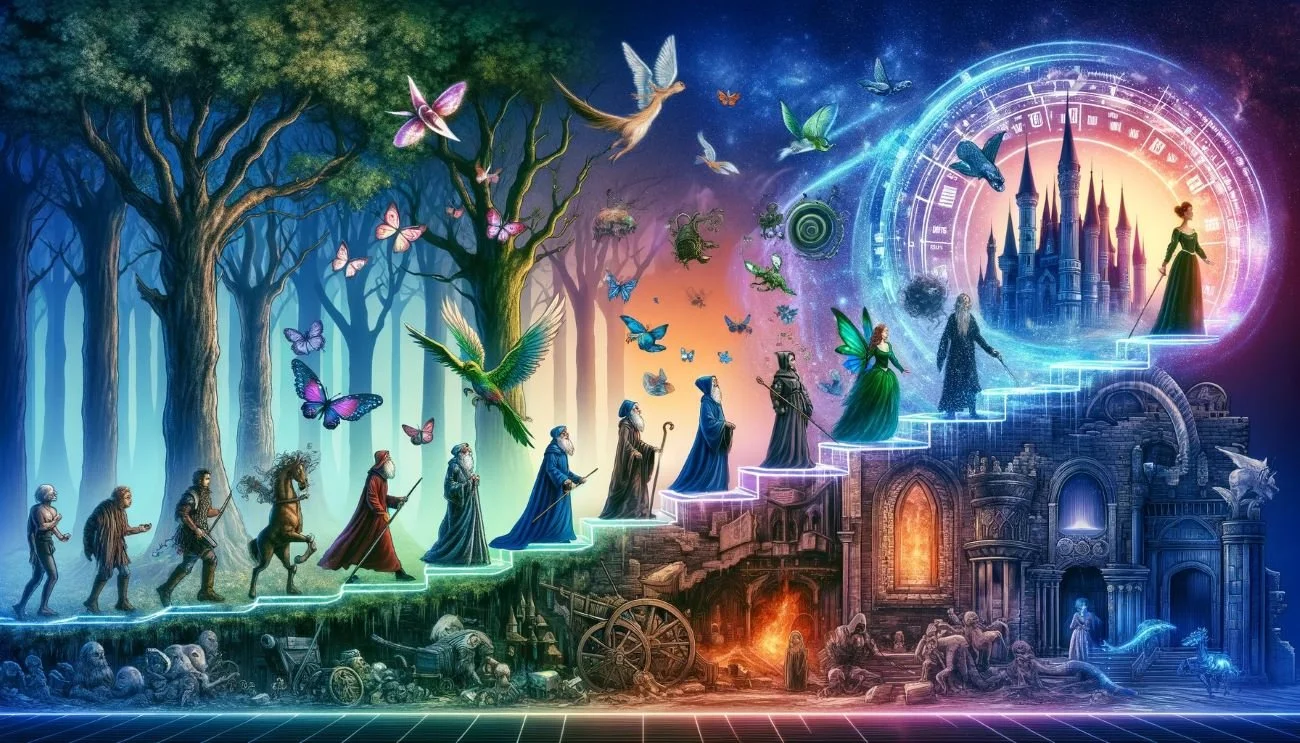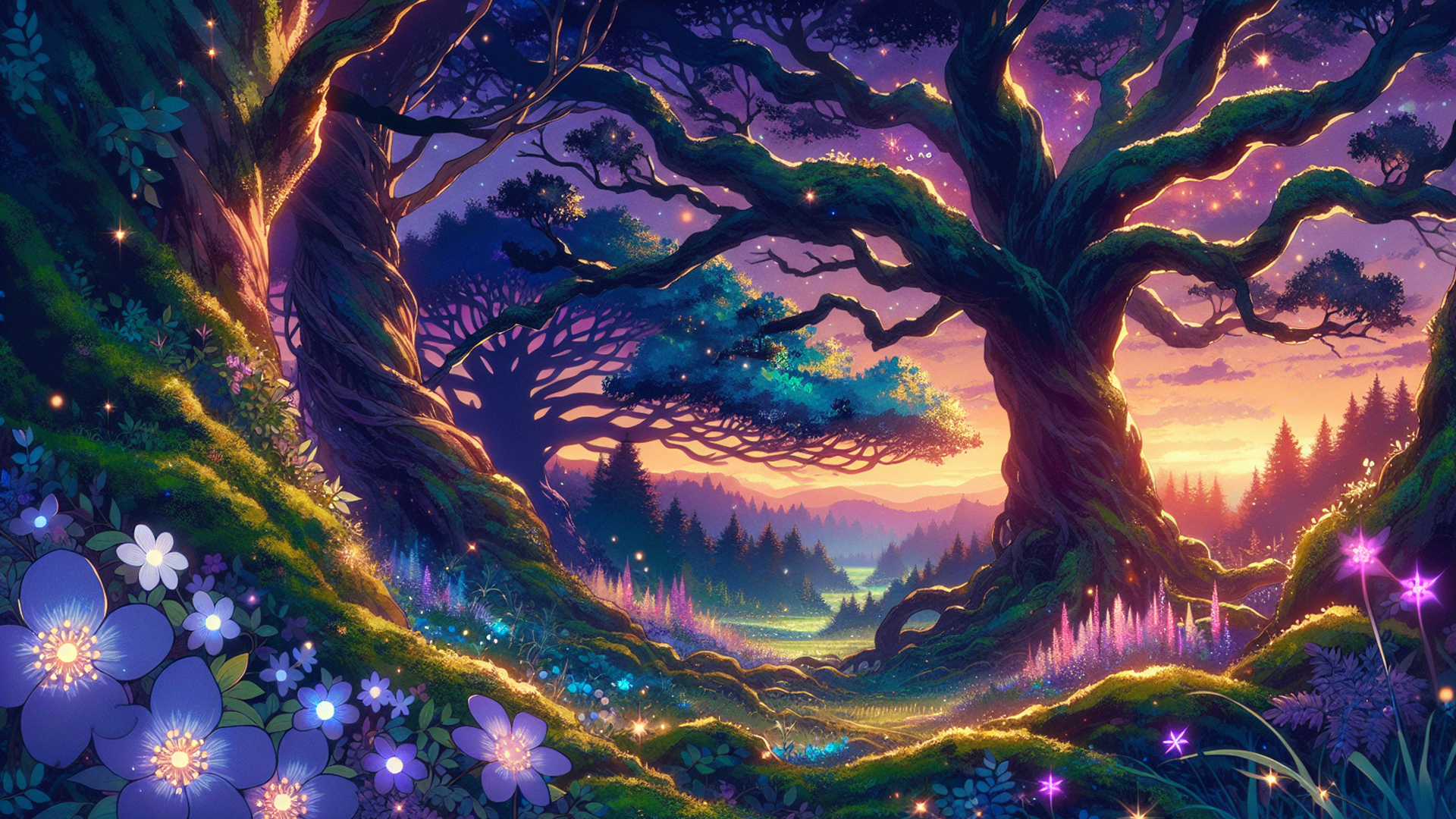Welcome to the enchanting world of fairy tales, a realm where magic knows no bounds, and the impossible becomes possible. Fairy tales, with their mystical lands, heroic quests, and timeless morals, have captivated the hearts and imaginations of people across all ages and cultures. These tales are not just mere stories; they are woven into the very fabric of human history, offering a window into our collective dreams and fears.
In this journey, we will explore the mesmerizing evolution of fairy tales through the annals of history. From their humble beginnings in the oral traditions of ancient civilizations to their lavish portrayal in today’s digital world, fairy tales have undergone a remarkable transformation. As we unravel the threads of their history, we’ll discover how these tales have been shaped by, and have in turn shaped, the societies in which they were told. So, sit back, relax, and let the magic of fairy tales transport you to a world where anything is possible and every story has a deeper meaning waiting to be uncovered.
Origins of Fairy Tales
The story of fairy tales begins not in a faraway land, but in the ancient past, rooted in the rich soil of oral traditions.
Delving into the Ancient Roots of Fairy Tales in Oral Traditions
Long before the written word, fairy tales were part of the oral traditions of various cultures around the world. These stories were more than just entertainment; they were a means of preserving history, imparting moral lessons, and explaining the mysteries of the world. Passed down from generation to generation, each telling added new layers and nuances, allowing these tales to evolve and flourish. The oral tradition ensured that fairy tales were dynamic and adaptable, changing with the times while retaining their core essence.
Early Written Records and the Transition to Literary Forms
The leap from spoken word to written text marked a pivotal chapter in the life of fairy tales. The earliest recorded fairy tales date back to ancient civilizations like Egypt and Greece. For example, tales similar to “Cinderella” and “Beauty and the Beast” can be found in the writings of classical authors. This transition to literary form brought a certain permanence to these tales. However, it also meant that they became somewhat fixed, crystallizing certain versions over others. Despite this, the essence of fairy tales remained intact – their ability to enchant and transport readers to a world of wonder and imagination.
Middle Ages to Renaissance: The Formative Years
The journey of fairy tales through the Middle Ages and the Renaissance is a tale of transformation and adaptation, influenced by the shifting tides of society and culture.
How Fairy Tales Evolved During the Middle Ages and the Renaissance
During the Middle Ages, fairy tales began to absorb elements of the prevailing religious and social values. They often mirrored the hierarchical structure of society and were used as tools for moral and ethical instruction. With the advent of the Renaissance, a period marked by a renewed interest in art and literature, fairy tales began to evolve in complexity and depth. This era saw the emergence of more nuanced characters and intricate plots, reflecting the intellectual and artistic awakening of the time.
The Impact of Cultural and Societal Changes on These Stories
The transformation of fairy tales during these periods is a testament to their flexibility and enduring relevance. The societal shifts, from the feudal systems of the Middle Ages to the humanistic approaches of the Renaissance, left an indelible mark on these narratives. Stories that once centered around simple moral lessons began to explore themes of romance, adventure, and individuality. The changing face of society, with its evolving ideas about humanity, justice, and the natural world, was thus mirrored in the evolving nature of fairy tales. These stories became not just a reflection of the times but also a medium through which the hopes, fears, and values of society could be explored and expressed.
The Brothers Grimm and the Collection of Fairy Tales
The Brothers Grimm, Jacob and Wilhelm, played a monumental role in the world of fairy tales, shaping the genre as we know it today.
Examining the Pivotal Role of the Brothers Grimm in Shaping Fairy Tales
The Grimm brothers embarked on a mission to collect and preserve traditional German folktales, a venture that would indelibly influence the fairy tale genre. Their collection, “Grimm’s Fairy Tales,” includes some of the most famous stories ever told, such as “Cinderella,” “Snow White,” and “Hansel and Gretel.” Their work was crucial in saving these tales from the brink of extinction, ensuring their transmission to future generations.
Analysis of Their Methods in Collecting and Standardizing Tales
The Grimms’ method of collecting fairy tales was both systematic and scholarly. They gathered stories from various oral sources, primarily rural storytellers, and then meticulously edited and standardized them. This process often involved embellishing the tales to fit their vision of a proper fairy tale and aligning them with their own moral and cultural values. While this approach sometimes altered the original spirit of the tales, it also gave them a new form that was more palatable and accessible to a broader audience. The Grimms’ version of these tales has had a lasting impact, influencing how fairy tales are perceived and told across the world.
From Oral to Literary: The Shift in Fairy Tale Narration
The transformation of fairy tales from being orally narrated to being written down marked a pivotal shift in the way these stories were told and experienced.
The Transition from Oral Storytelling to Written Formats
Originally, fairy tales were part of the oral tradition, passed down verbally from one generation to the next. This method of storytelling allowed for a dynamic and interactive relationship between the storyteller and the audience, with tales often being altered in the telling to suit the listeners or to reflect contemporary social and cultural contexts. The shift to written formats began to solidify these fluid narratives, providing them with a more permanent and unchanging form. This transition was crucial for the preservation of these stories but also meant that they lost some of their adaptability and immediacy.
How This Shift Influenced the Structure and Themes of Fairy Tales
The move to a written medium brought significant changes to the structure and themes of fairy tales. In their written form, fairy tales became more structured, with a clearer beginning, middle, and end, and less reliance on audience interaction. This format allowed for more complex and detailed storytelling, with deeper character development and more intricate plots. Thematically, written fairy tales began to reflect the values and morals of the society in which they were recorded, sometimes leading to the alteration or omission of certain elements from the original oral versions. This period also saw the emergence of the fairy tale as a literary genre aimed more specifically at children, leading to a further refinement of content to suit this new audience.
Victorian Era: The Sanitization and Moralization of Fairy Tales
The Victorian era brought about significant changes to the content and tone of fairy tales, aligning them with the era’s distinct moral and societal values.
Understanding How the Victorian Era Altered Fairy Tales
In Victorian times, there was a strong emphasis on morality and propriety, and this cultural backdrop heavily influenced the way fairy tales were adapted and presented. The era saw a concerted effort to sanitize fairy tales, stripping away elements that were considered too dark, violent, or inappropriate for the sensibilities of the time, particularly for a young audience. This sanitization often involved removing the more gruesome details of the original stories and adding more overt moral lessons.
The Emphasis on Morals and the Softening of Darker Elements
Victorian adaptations of fairy tales frequently included explicit moral lessons, reflecting the era’s focus on ethical education for children. This period also saw the introduction of more virtuous and passive characters, especially female protagonists, aligning with the Victorian ideal of innocence and purity. The softened versions of these tales, with their clear-cut morals and less threatening narratives, were more palatable to Victorian audiences and were used as tools for instilling societal values in children. The legacy of this sanitization and moral emphasis is still evident in many of the fairy tale versions popular today.
20th Century and Beyond: The Modernization of Fairy Tales
The 20th century heralded a significant transformation for fairy tales as they adapted to the rapidly changing world around them.
Exploring How Fairy Tales Adapted to the Changing Times in the 20th Century
Throughout the 20th century, fairy tales evolved significantly, influenced by the dramatic changes in society. This period saw fairy tales being used both as tools for escapism during turbulent times and as means for social and political commentary. The narratives and characters of these tales were adapted to resonate with contemporary audiences, reflecting the challenges, hopes, and fears of the modern world.
The Influence of Global Wars, Technological Advancements, and Cultural Shifts
The impact of global events such as the World Wars brought about darker and more introspective themes in fairy tales. These stories began to explore complex moral dilemmas, reflecting the realities of a world experiencing profound conflict and change. Additionally, technological advancements, particularly in film and television, opened new avenues for the visualization and dissemination of fairy tales, allowing them to reach a wider audience. The rise of mass media and later digital media transformed the way these tales were told and experienced, introducing them to diverse cultural and social contexts.
Fairy Tales in Contemporary Media
In contemporary media, fairy tales have found new life, continuously evolving to reflect and comment on modern society.
The Adaptation of Fairy Tales in Modern Literature, Film, and Television
Modern literature, film, and television have embraced fairy tales, often reinterpreting them with a contemporary twist. In literature, authors like Angela Carter and Neil Gaiman have reimagined classic tales, infusing them with modern themes and perspectives. In film and television, fairy tales have been adapted in a myriad of ways, ranging from faithful renditions to creative reinterpretations that challenge traditional narratives. These adaptations often explore deeper and more complex themes, catering to both children and adult audiences.
How These Adaptations Reflect Current Societal Values and Issues
Contemporary adaptations of fairy tales often reflect current societal values and issues. Themes such as gender roles, power dynamics, and social justice are frequently explored, offering new interpretations and critiques of the traditional tales. For instance, films like “Frozen” and “Maleficent” challenge conventional portrayals of female characters, presenting them as complex and empowered figures. These modern retellings not only entertain but also provoke thought and dialogue about contemporary issues, showcasing the enduring relevance of fairy tales in mirroring and influencing societal norms.
Global Influence and Cross-Cultural Adaptations
Fairy tales have traversed borders and oceans, taking root in diverse cultures, each adding its unique flavor and perspective to these timeless narratives.
Tracing the Spread of Fairy Tales Across Different Cultures
The journey of fairy tales across the globe is a testament to their universal appeal. These stories have been adapted by various cultures, absorbing local traditions, values, and motifs. In Asia, for example, fairy tales often incorporate elements of local folklore and mythology, while in Africa, they may include moral lessons intertwined with the natural world and community. These global variations enrich the original tales, offering a broader perspective on the themes and morals they convey.
Comparative Analysis of Various Cultural Interpretations of Classic Fairy Tales
Comparing different cultural interpretations of classic fairy tales reveals fascinating variations and commonalities. For instance, the story of Cinderella has versions in cultures as varied as China, Egypt, and Native American tribes, each reflecting the unique societal values and traditions of these cultures. While the core narrative may remain similar, the characterizations, settings, and resolutions often differ, providing insights into the cultural context in which each version evolved. This comparative analysis not only highlights the adaptability and resilience of fairy tales but also underscores the shared human experiences and values that these stories represent.
The Future of Fairy Tales
As we look towards the future, fairy tales are poised to continue their evolution, adapting to the changing landscapes of technology and global society.
Speculating on the Continuing Evolution of Fairy Tales
The future of fairy tales seems bound to the rapid advancements in technology and the ever-increasing global interconnectedness. These stories are likely to evolve in form and substance, addressing contemporary issues and reflecting the diverse, multicultural world we live in. We may see fairy tales that tackle themes like environmentalism, globalization, and technology itself, resonating with new generations and their experiences.
The Role of Technology and Global Connectivity in Shaping Future Tales
Technology, particularly in the realm of digital media and interactive storytelling, is set to play a significant role in the future of fairy tales. With advancements in virtual and augmented reality, fairy tales could be experienced in more immersive and engaging ways, allowing audiences to step into the storyworlds like never before. Additionally, global connectivity facilitates the cross-cultural exchange of stories, leading to a rich tapestry of narratives that blend elements from different traditions and perspectives. This interconnectedness could lead to a new era of fairy tales that are truly global in their character and appeal, fostering a deeper understanding and appreciation of diverse cultures and experiences.
Conclusion
As we conclude this journey through the enchanting realm of fairy tales, it’s clear that these narratives are much more than mere stories; they are a vital part of our cultural and historical fabric.
Reflecting on the Enduring Legacy and Constant Evolution of Fairy Tales
Fairy tales have stood the test of time, evolving and adapting to the changing currents of human history. Their ability to enchant, educate, and inspire has remained constant, even as the stories themselves have transformed. This enduring legacy speaks to the fundamental role of fairy tales in exploring and explaining the human experience. They serve as mirrors reflecting societal values and windows opening to other worlds and perspectives.
The Importance of Fairy Tales in Understanding Human Culture and History
Fairy tales offer invaluable insights into the cultures and eras from which they originate. They are historical documents that capture the hopes, fears, and values of societies. As they continue to evolve, they not only preserve the past but also engage with the present, offering commentary on contemporary issues and connecting people across cultures. The future of fairy tales is as promising as their past, with their potential to adapt to new forms of media and to address the global challenges of the modern world.
In their timeless nature and their ability to evolve, fairy tales remind us of the enduring power of storytelling. They confirm that no matter how much the world changes, our need for stories that entertain, enlighten, and unite us remains the same.






0 Comments